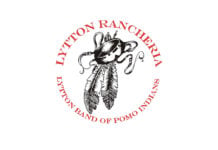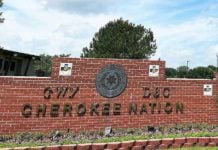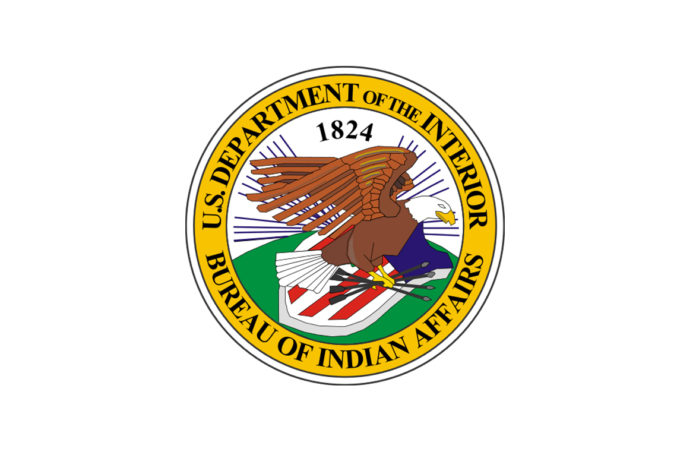WASHINGTON, D.C. – The Bureau of Indian Affairs (BIA) announced that it has awarded more than 6.5 million in Energy and Mineral Development Program (EMDP) grants to 27 federally recognized tribes and seven Alaska Native corporations in 15 states. The funding will aid their efforts to identify, study, design and/or develop projects using energy, mineral and natural resources, which, in turn, will help them achieve economic self-sufficiency by developing and controlling their own energy production capabilities.
“Having direct access to a reliable energy source is often taken for granted in the United States, but due to their remote locations, it can be a real challenge for American Indian and Alaska Native communities to achieve that standard,” said Principal Deputy Assistance Secretary – Indian Affairs Bryan T. Newland. “The BIA’s Energy and Mineral Development Program grants seek to close this gap by supporting efforts to develop tribally and Alaska Native corporation-owned energy resources to benefit tribal members and ANC shareholders while contributing to Indian Country’s economic progress.”
The Bureau’s EMDP grants help eligible applicants obtain technical assistance funding to hire consultants to identify, evaluate or assess the market for energy or mineral resources that a tribe will process, use, or develop. The grants provide funding that allow the tribe to conduct resource inventories and assessments, feasibility studies, or other pre-development studies necessary to process, use and develop energy and mineral resources.
The BIA Office of Trust Services’ Division of Energy and Mineral Development (DEMD) assists tribal governments and American Indian Allottees with evaluating energy and mineral resource potential on their lands. Recipients use this information to determine whether or not they wish to develop energy projects, or extract and market commercially, or strategically, valuable minerals.
DEMD solicits proposals on an annual basis from tribes and through a competitive review process, then selects qualified projects for funding. The program’s grant amounts are dependent upon annual congressional appropriations. The projects announced were selected from among 53 proposals submitted during the FY 2020 funding cycle.
The FY 2020 EMD grant awardees are:
- Absentee Shawnee Tribe of Oklahoma, Oklahoma ($75,000.00) – To identify and evaluate different options for developing a solar project for a tribally owned property that is technically and environmentally applicable for implementation and to identify the logistical and financial feasibility of the project development effort.
- Ahtna Incorporated, Alaska ($312,000.00) – To determine if a commercial wind farm is feasible in the Willow Mountain Area. The objectives this project proposes are to: 1) install two 50-meter meteorological towers in the Willow Mountain Area and collect 12 months of data (with an option to extend an additional 12 months); 2) conduct a marketing and economic evaluation of the potential wind farm development; 3) review project-specific technical issues; 4) review site-specific environmental conditions, and 5) review regulatory requirements.
- Bay Mills Indian Community, Michigan ($115,000.00) – To determine whether installing a combined heat and power (CHP) system within their casino and hotel would be feasible and profitable over time.
- Bear River Band of the Rohnerville Rancheria, California ($283,270.00) – To allow the tribe to hire Schatz Energy Research Center to assess the economic and technical feasibility of nine solar projects on its rancheria.
- Bristol Bay Native Corporation, Alaska ($89,650.00) – To fund aerial and ground surveys of the volcanic formation (Tuya) near the communities of Togiak and Twin Hills. The purpose of these surveys would be to locate and begin to assess heat sources as potential geothermal energy sources.
- Calista Corporation, Alaska ($721,510.00) – Consists of a port site development, a nominally 4-mile port access road, a 1-mile quarry access road, and development of a quarry at the identified mineral source. The Pilcher Quarry project consists of design and construction of infrastructure necessary to allow rock extraction from a proposed quarry located on Pilcher Mountain in Marshall, Alaska.
- Chemehuevi Indian Tribe, California ($350,000.00) – Proposes to analyze and follow up on findings from the Phase 2 Chemehuevi Mineral Assessment Project, with TechSource, Inc. (TSI) of Los Alamos, N.M., to determine potential deposits of minerals, with a focus on manganese, on Chemehuevi tribal lands.
- Cheyenne and Arapaho Tribes, Oklahoma ($125,000.00) – To address the Tribes’ next phase of energy development: to purchase or drill future wells in high output areas, construct a natural gas to electricity conversion plant , and develop a phased Tribe Electrical Microgird.
- Chitina Native Corporation, Alaska ($166,650.00) – To conduct an assessment of residential and commercial heating demands in the Chitina community, which is currently met by imported diesel heating fuel.
- Coeur d’Alene Tribe, Idaho ($69,353.00) – This project will result in a thorough assessment of the economic and technological viability of solar development for a minimum of ten tribal facilities within the Tribe’s reservation (Benewah Market, Benewah Auto, Housing Authority building and shop, tribal rental homes in Plummer, Idaho, the Gathering Place apartment complex, Food Distribution Warehouse, Felix Aripa building and shop, tribal school).
- Cook Inlet Region Inc., Alaska ($98,140.00) – To complete a pre-development study necessary to facilitate the use and development of mineral resources, including a full-season exploration program and in-depth evaluation of the Farewell district’s precious, base and critical metal resources.
- Cow Creek Band of Umpqua Tribe of Indians, Oregon ($120,000.00) – To gain support for taking the first step in developing a suitable revenue source: completion of a feasibility study that will address a combination of elements found in both conceptual and feasibility studies as described in the EMPD Grant Writing Guide for Small Scale Biomass Projects and be comprised of the guide’s 11 tasks.
- Elk Valley Rancheria, California ($88,008.00) – Will help the tribe’s leadership to evaluate several renewable energy project concepts and identify the most attractive alternative to meet their goals of reducing the tribe’s environmental impact, reducing energy expenditures, and enhancing tribal sovereignty.
- Fond du Lac Band of Lake Superior Chippewa, Minnesota ($96,000.00) – To assess, evaluate and promote Biomass Fuel Utilization through the Office of Indian Economic Development. Funding will be used to design a wood bio-fuel district heat operation for 54 homes and a community center. The Band is interested in installing district heat at Brookston Community Center and housing district.
- Iñupiat Community of the Artic Slope, Alaska ($280,393.00) – To explore and characterize sand and gravel resources across the eight villages of the North Slope.
- Little River Band of Ottawa Indians, Michigan ($94,954.00) – To develop a renewable energy microgrid that accomplishes the tribal council’s desire to increase the tribe’s sovereignty, enhance its resilience, increase economic development, and reduce its carbon footprint.
- Lummi Indian Tribe, Washington ($105,000.00) – To conduct a feasibility study in order to assess the financial and technical requirements of a microgrid designed to: 1) improve economic and energy self-sufficiency and 2) reduce emissions from energy production and use that contribute to global climate change, air quality degradation, and other adverse environmental and human health impacts.
- Metlakatla Indian Community, Alaska ($170,387.00) – To explore developing wind energy and evaluate electrical control and distribution system improvements to increase the energy resilience and security of its members and residents of the Annette Islands Reserve.
- Middletown Rancheria, California ($86,390.00) – To understand the feasibility of generating solar power to support a potential future housing development which will be built with an “Eco-Village” concept on newly purchased tribal lands.
- Native Village of Port Heiden, Alaska ($192,000.00) – To assess the value, benefits and configuration of a potential hybrid renewable energy+battery storage and diesel system.
- Nunakauiak Yupik Corporation, Alaska ($57,350.00) – To provide sufficient examination of solid minerals and aggregate with feasibility and economic studies to promote the use and development of energy and mineral resources on tribal lands.
- Osage Nation, Oklahoma ($96,420.00) – To enhance and expand the design and flexibility of the existing OsageMinerals.org so that all records, maps, production, leasehold and other pertinent information can be easily accessed by quarter section in a user-friendly format.
- Osage Nation, Oklahoma ($299,645.00) – To define and evaluate the sand and gravel assets on the Osage Reservation and conduct an economic evaluation of the promising sites based on geology, grades, production and potential markets where aggregate supplies from the Nation can be marketed and sold.
- Passamaquoddy Tribe – Indian Township, Maine ($80,000.00) – Specific to the small-scale pellet mill proposed at Passamaquoddy – Indian Township and related to assessing the market potential and evaluating market capacity to sustain the project.
- Pawnee Nation of Oklahoma, Oklahoma ($ 71,475.00) – Seeks to conduct a comprehensive solar feasibility study to reduce tribal dependence upon costly, nonrenewable electricity.
- Peoria Tribe of Indians of Oklahoma, Oklahoma ($73,218.00) – To determine the viability of a solar power plant on existing land.
- Pueblo of San Ildefonso, New Mexico ($169,000.00) – To assess the feasibility of solar photovoltaic (PV) opportunities on tribal lands.
- Pueblo of Santa Ana, New Mexico ($93,645.45) – Will give the Santa Ana Pueblo’s leadership a firm understanding of the potential solar PV development projects the Pueblo could pursue and create an implementation plan for a project selected by them.
- Sac and Fox Tribe of the Mississippi in Iowa (Meskwaki), Iowa ($84,969.33) – To evaluate the feasibility of harnessing the Tribe’s renewable energy resources to power a microgrid system for its facilities.
- Southern Ute Indian Tribe, Colorado ($545,000.00) – To study and identify practical and viable strategies to implement an Enhanced Outcrop Methane Capture (EOMC) project at the Fruitland Formation outcrop, inside the Southern Ute Indian Tribe reservation.
- Navajo Nation, Arizona ($475,609.50) – To mature and identify new, previously untested, potential helium-bearing prospects on Navajo lands and put the Nation in a position to develop its helium resources and/or attract partners and investors to pay for exploration and development expenses.
- Tikigaq Corporation, Alaska ($100,000.00) – To assess, plan and develop a gravel quarry at site PHRK07, Phase I of a potential III-phase project. Phase I assessment results will determine whether Phases II and III go forward.
- Ute Indian Tribe, Utah ($600,000.00) – To be used for geologic characterization and engineering analysis of oil and gas potential on the Uintah and Ouray Reservation.
- White Earth Band of Chippewa Indians, Minnesota ($86,930.00) – Will allow the Band to identify and explore all possible economic development options as part of their economic growth. To qualify and quantify the aggregate deposit with a comprehensive field mapping and sampling program that includes: 1) detailed field mapping, 2) surface sampling, and 3) subsurface sampling.
- Winnebago Tribe of Nebraska, Nebraska ($29,300.00) – To support its continued efforts to develop and utilize renewable solar energy resources. The objective of this project is to complete a feasibility study, over the course of 12 months, to assess the viability of 11 tribal building rooftops and two tribal land locations as potential sites for solar panel installation.













































